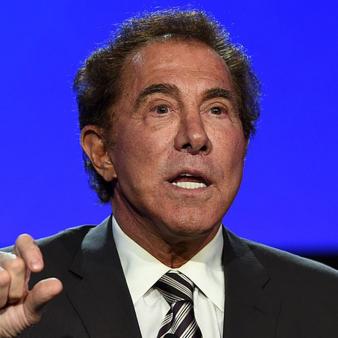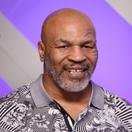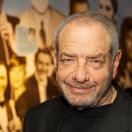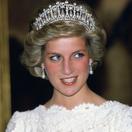Once upon a time, Wayne Newton was the King of Las Vegas. The "Danke Schoen" singer was the physical embodiment of the ritz and glitz that defined the Las Vegas Strip throughout the 1970s and and 80s. Today, (and for the last roughly 20 years) the undisputed King of Las Vegas has been casino tycoon Steve Wynn. Wynn's personal and commercial contributions to both the Strip and the city at large have radically improved the fortunes of Las Vegas forever. And his life story is a perfect metaphor Las Vegas itself: Where else could someone place a $45,000 bet and see it grow into a $3 billion fortune?
Stephen Alan "Steve" Wynn was born on January 27, 1942 in New Haven Connecticut. His father was an illegal bingo game operator, so gambling truly is in Steve's blood. The Wynn family moved to Las Vegas in 1952 so his father Mike could run his bingo parlor at the Silver Slipper casino on the Strip. However, after six weeks, he was run out of business by the far more popular bingo games at the Golden Nugget in downtown Las Vegas.
After the failure of the bingo parlor, the Wynns moved to Maryland and Steve enrolled at the University of Pennsylvania. He worked at his father's new bingo parlor on Sundays while in college to make extra income. Wynn had originally intended to go to med school. Unfortunately, his father died suddenly in 1963, just before Steve graduated from college. A death in the family is always a tragedy, but to make matter worse, Steve's father died with $350,000 worth of gambling debt. That's $2.7 million worth of debt in today's dollars. So Steve was forced to cancel his med school plans and instead move back home to take over the family bingo parlor. As they say, a legend was born.
Wynn ran the game, calling the numbers, while his wife Elaine handled the cash. Running the parlor allowed Steve to meet many of his dad's old business contacts. These contacts included several long time gamblers and characters associated with the Mafia. These people he met in the 1960s led him to another one of his father's longtime associates, Maurice Friedman. Friedman, who lived in Las Vegas, was later linked to a branch of the Mafia in Detroit. (It should be noted that Steve Wynn has never been tied to organized crime in any way)
After spending years watching his father and cronies lose money gambling, Steve Wynn came to a very simple conclusion. In his own words: "This showed me at a very early age that if you wanted to make money in a casino, the answer was to own one."
Using Friedman's contacts and a $30,000 loan from a family friend, Steve Wynn bought three percent of the Frontier Hotel on the Las Vegas Strip in 1965. The total cost of this venture was $45,000. He soon borrowed another $30,000 from a Las Vegas bank to acquire an additional two percent stake in the hotel and casino. This amount of shares allowed Steve to qualify for a small portion of the Frontier's gambling profits.
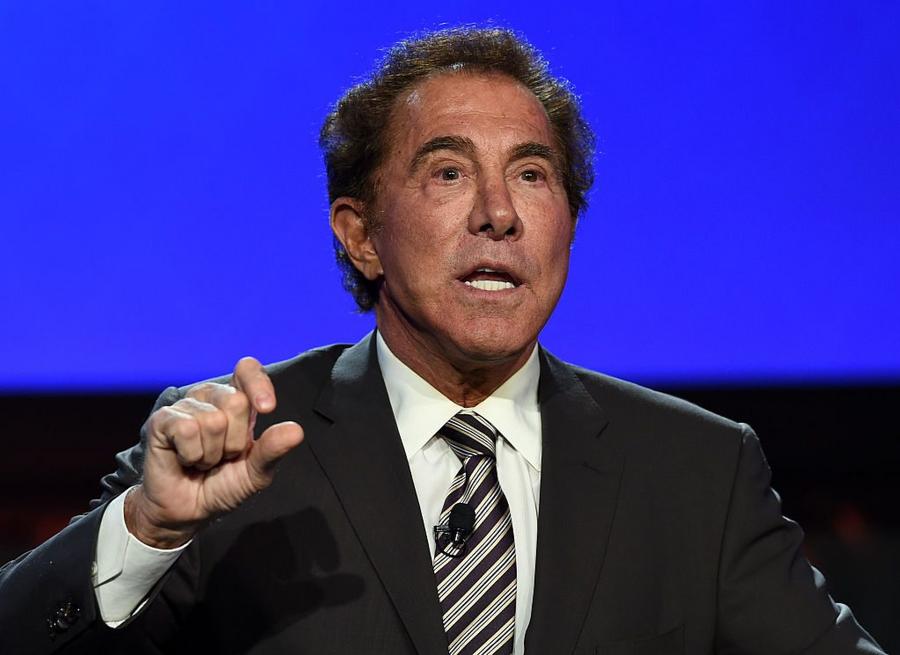
Steve Wynn – Vegas Billionaire Tycoon / Ethan Miller/Getty Images
In 1967, Steve and Elaine Wynn moved to Las Vegas. He became the Frontier's slot and casino manager. He was 25-years old. However, within weeks, Friedman was implicated in a card cheating scheme in California and his affiliation with the Detroit Mafia came to light. The Frontier's investors quickly sold the hotel-casino to Howard Hughes for $24 million. As a minority investor who was only entitled to gambling profits, Steve did not see anything significant from the sale.
After the Frontier sale, Wynn floated a bit, co-producing lounge acts in casinos. He wanted more, and in 1969, the 27-year old would have a fateful meeting with a Las Vegas banker named E. Parry Thomas. Thomas headed up Valley bank, which was like the Bank of America of Las Vegas – it was on every corner. Valley Bank was well-known for granting loans to casinos for years when other local banks would not. Thomas got Wynn a job as the Nevada liquor distributor for Best Brands. Wynn bought the company on credit granted to him from Valley Bank. In 1970, Wynn bought ten acres off the Las Vegas Strip for $154,000. Thomas lent him $400,000 to build a liquor warehouse there. After one year, Wynn sold that warehouse, and Best Brands for more than $700,000. His share of that deal was $170,000. That's worth roughly $1 million in today's dollars.
Valley Bank then loaned Wynn $1.2 million so he could by a narrow, one-acre slice of the Strip next to Caesar's Palace. This being Las Vegas, Wynn then placed a huge gamble: After receiving the loan, Steve took out a full page newspaper ad that announced his intention to build a competing casino directly across from Caesars Palace. In reality, Wynn had absolutely no intention (or more importantly, funds) to build a competing casino on his new property. He was instead banking on the hope that Caesar wouldn't call his bluff and instead just buy the land from him. They did. For $2.25 million. Wynn's share, after his loan from Valley Bank was paid off, was $687,000. Roughly $4.5 million in today's dollars. Nice bluff Steve!
Steve Wynn was now 30 and his dreams were growing. He set out to acquire a majority interest in the company that owned the Golden Nugget in downtown Las Vegas, the same casino that ran his father out of town years earlier. Steve had been purchasing shares in the company slowly over the years at that point. In 1973, Wynn owned 5.5% of the company and was granted a state gaming license. This allowed him to become an executive vice president and a board member. He then bought 225,000 more shares and by 31-years old, he was chairman of the Golden Nugget. This was the beginning of his reign, and he played it right. He upgraded the Nugget, making it downtown's ritziest hotel and casino. Profits grew steadily as a result.
In 1980, Wynn opened the Golden Nugget Atlantic City and signed Frank Sinatra to perform at both the Las Vegas and Atlantic City Golden Nugget Casinos. This was a savvy move, as Sinatra brought the whales and high rollers to both casinos, vastly increasing profits.
Unfortunately, Steve soon ran into trouble with the New Jersey Casino Control Commission. In 1984, the commission claimed to have evidence that tied Wynn to the New York mobster Anthony Salerno. The commission alleged that the mob was laundering money through Wynn's Atlantic City property. The charges were never proven, as there was no direct link between Wynn and the mobsters. However, the whole charade left a bad taste in Steve's mouth and he sold the Atlantic City casino, making a profit of $260 million for the company.
To clear his palete of that negative experience in Atlantic City, Steve subsequently decided to place the biggest bet of his entire career on a little-known, grungy section of Las Vegas called The Strip. In the 1980s the Las Vegas Strip was pretty gross. The hotels and casinos were old and had seen much better days. It was depressing. Only the MGM Grand (now Bally's), stood out because it was just a few years old, But it was not exactly a noteworthy casino and definitely not a game changer for the Strip itself. Long story short, at the time, The Strip a world away from what you imagine today. Definitely not a place where the average Vegas visitor would want to stay.
Wynn was able to secure $1 billion in credit, which was at the time completely unheard of. He raised about $160 million of it from junk bond trader Michael Milken. With the funding, Wynn set out to build a new kind of hotel-casino. His casino, The Mirage, cost a then record $620 million to build and open. It opened in 1989 and became an instant success and tourist destination.
The Mirage signaled a new era for the Strip and its hotels, resorts, and casinos. Wynn had truly raised the bar. The Mirage brought higher quality standards to the Strip, ushering in the fine dining, shopping, hotel suites, entertainment, and other attractions Las Vegas tourists enjoy today. Wynn's vision was to cater to middle and upper-class tourists, thereby bringing more disposable income into his property. The Mirage's instant (and continued) success encouraged other companies to buy into Wynn's vision and build competing megaresorts nearby, including the new MGM Grand, Luxor, Excalibur, and Venetian.
In 1993, Wynn took part of the Mirage's parking lot and built a brand new 32-story megaresort, Treasure Island. TI had/has a live, simulated pirate ship battle performed every 15 minutes out in front of the resort.
In the 1990s Wynn conceived of a new kind of Strip megaresort. As the years had gone by, the new resorts modeled after his vision had become more and more Disney-esque and cartoonish. He envisioned something more elegant that harkened back to the glamorous rat pack days of the Strip. He acquired the downtrodden Dunes Hotel site and had it imploded on live TV in 1993. Five years later $1.6 billion Bellagio opened. Once again, Wynn had raised the standards for new Strip resorts.
The Bellagio featured a fine art gallery consisting of Wynn's extensive and impressive art collection. The centerpiece of the collection is Le Rêve, the Picasso portrait that was the working name of the resort project. Wynn purchased the painting from an anonymous collector in a private sale in 2001. In 2006 Wynn reportedly was to sell it for $139 million, which would at that time have been the highest price paid for any piece of art. However, one day while showing the painting off to Nora Ephron and Barbara Walters, Wynn (who suffers from a debilitating eye disease) accidentally put his elbow through the painting. The damage cancelled the sale and cost $90,000 to repair. He eventually sold Le Reve in 2013 for $155 million.
Wynn's art collection also includes $38.5 million for J.M.W. Turner's Guidecca, La Donna Della Salute and San Giorgi, a $33.2 million Rembrandt, several painting by Claude Monet and in 2012 he acquired Jeff Koons' Tulips for approximately $33.6 million. The Bellagio's art gallery closed in early 2006 and the artwork is now scattered around the resort. Wynn Resorts pays an annual lease on the art of $1 which includes insurance and security.
After the Bellagio opened, just like with the Mirage, another building frenzy hit the Strip with competitors desperate to keep up with Wynn. The megaresorts born out of this boom include Paris-Las Vegas and Mandalay Bay.
In 1999, Wynn sold his company, Mirage Resorts to MGM Grand owner Kirk Kerkorian, who had launched a bit to take over the company. Wynn's corporation was the then biggest buyout of a hotel-casino operation in history. Mirage Resorts sold for $6.7 billion. Wynn made about $500 million from the sale. He then used part of that money to buy the aging but classic Desert Inn on the Strip. Wynn closed and imploded the Desert Inn to build Wynn Las Vegas. This megaresort which opened in 2005, cost $2.7 billion to build and features 2,716 hotel rooms, and the only golf course remaining on the Strip.
The Wynn Macau opened in 2006. The year 2008 saw one of the worst recessions in the U.S. in decades and Las Vegas was feeling the pinch. So what did Wynn do? He opened another splashy, elegant resort to the tune of $2.3 billion. The Encore, a companion piece to Wynn, features 2,034 rooms that are all suites. Encore Macau opened in 2010.
Steve Wynn's business model brings to mind Bugsy Siegel who decades earlier happened upon a sleepy Nevada desert town and saw greatness. Similarly, Wynn saw an aging and outdated Strip and ushered it into the 21st century with class and glamour. As the Ivy league educated son of an illegal bingo parlor operator, Wynn was imbued with a unique perspective. He has transformed not just the Strip, but Las Vegas. His reward for these incredible feats of success? That original $45,000 gamble has turned into an impressive $3 billion fortune for Mr. Wynn. #Wynning.
He is the third richest person in Nevada and when he isn't in the state can be found living in his $70 million, 14 room Manhattan penthouse that overlooks Central Park. His yacht Aquarius is staffed by approximately 200 full time staff members. Steve would be even richer but he lost $1.4 billion in his divorce from former wife Elaine Wynn. Apparently marriage was one big gamble that crapped out for Steve Wynn. No matter! There's still nearly $3 billion left to play with, and in Vegas there's no limit to where that fortune can grow!
